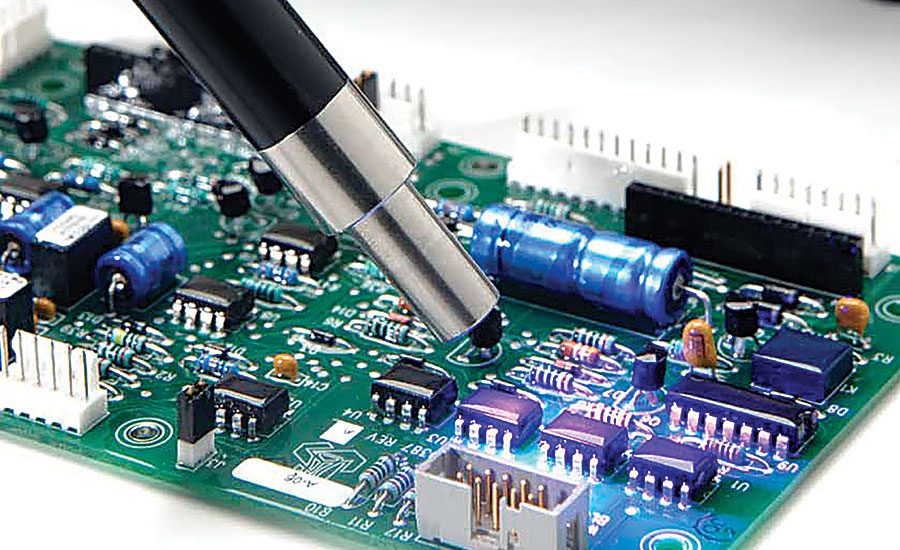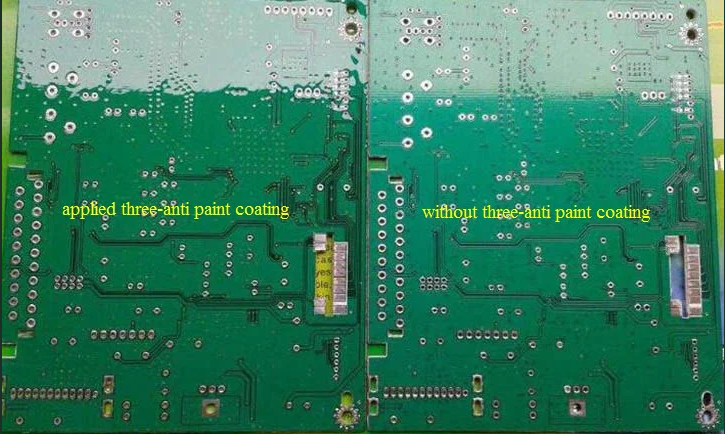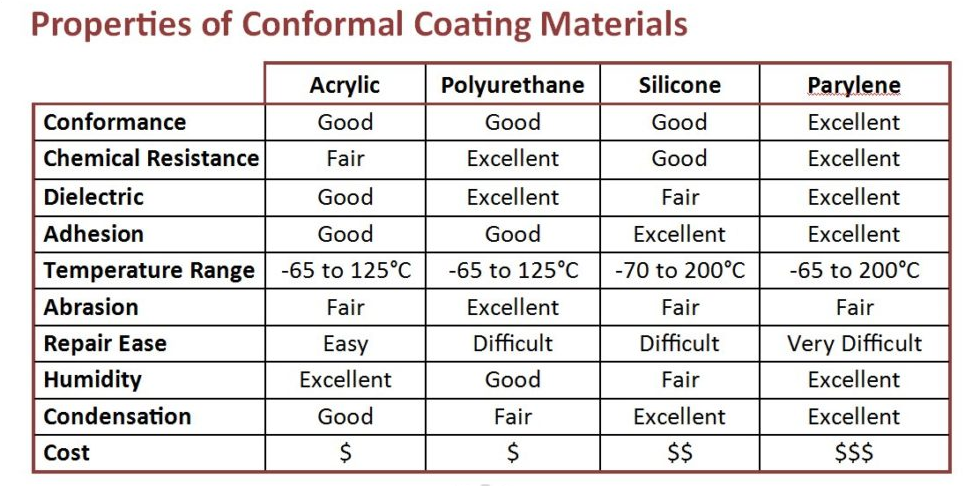In the fast-evolving automotive industry, printed circuit board assemblies (PCBAs) are the backbone of critical systems like engine control units, infotainment, and advanced driver-assistance systems (ADAS). These PCBAs operate in harsh environments—exposed to moisture, extreme temperatures, vibrations, and chemical contaminants. To ensure reliability and longevity, conformal coatings are applied to protect PCBAs from these stressors. But what standards govern these coatings in automotive applications, and why do they matter? This blog dives into the key conformal coating standards for automotive PCBAs, offering engineers actionable insights to design robust, compliant electronics that meet the industry's stringent demands.
Why Conformal Coatings Are Critical for Automotive PCBAs
Conformal coatings are thin polymeric films applied to PCBAs to shield them from environmental hazards. In automotive applications, PCBAs face unique challenges: temperature swings from -40°C to 125°C, humidity levels up to 95% RH, and exposure to road salt, oils, and fuel vapors. Without protection, these conditions can lead to corrosion, electrical shorts, or component failure, compromising vehicle safety and performance.
Coatings act as a dielectric barrier, preventing moisture ingress and reducing the risk of electrochemical migration, where conductive dendrites form between closely spaced traces. For example, a typical automotive PCBA with trace spacing as tight as 0.1 mm requires a coating with a dielectric strength of at least 500 V/mil to prevent arcing. By adhering to standardized coating practices, manufacturers ensure PCBAs meet reliability and safety requirements, reducing warranty claims and enhancing customer trust.

Key Conformal Coating Standards for Automotive PCBAs
Several industry standards define the requirements for conformal coatings in automotive applications. These standards ensure coatings provide consistent protection, adhere to safety regulations, and withstand the rigors of automotive environments. Below, we explore the most relevant standards.
IPC-CC-830C: The Foundation of Conformal Coating Qualification
The IPC-CC-830C standard, an evolution of the obsolete MIL-I-46058C, is the cornerstone for qualifying conformal coating materials. It outlines performance criteria for coatings used in PCBAs, including those in automotive applications. Key tests include:
- Insulation Resistance: Ensures the coating maintains electrical isolation under humidity (85% RH, 85°C for 168 hours). A typical requirement is a minimum insulation resistance of 10^10 ohms.
- Thermal Shock: Subjects coated boards to temperature cycles (-65°C to 125°C, 50 cycles) to verify durability. Automotive coatings must show no cracking or delamination.
- Fungus Resistance: Confirms the coating resists fungal growth, critical for PCBAs in humid environments.
- Flammability: Requires coatings to meet UL94 V-0, ensuring they self-extinguish within 10 seconds of flame exposure.
For automotive engineers, IPC-CC-830C provides a baseline to select coatings that meet reliability needs. Acrylics, silicones, and polyurethanes are commonly tested under this standard, with silicones often preferred for their flexibility in high-vibration environments like engine compartments.
IPC-A-610: Acceptability of Electronic Assemblies
IPC-A-610, the widely adopted standard for electronic assembly quality, includes specific guidelines for conformal coating application. Section 10.8 outlines acceptable coating coverage, thickness (typically 25–250 µm), and visual inspection criteria. For automotive PCBAs, key requirements include:
- Uniform Coverage: The coating must cover all intended areas without voids, bubbles, or pinholes, which could expose traces to moisture.
- Edge Coverage: Ensures sharp edges, like those on 0402 resistors, are fully coated to prevent cracking under thermal stress.
- Component Exclusion: High-power components, such as power resistors or heat sinks, must remain uncoated to avoid heat entrapment.
Non-compliance, such as dewetting (where the coating pulls away from surfaces), can lead to field failures. For instance, a 0.01 mm pinhole in a coating can allow moisture to reach a 0.2 mm trace, reducing insulation resistance by up to 50%.

ISO 26262: Functional Safety in Automotive Electronics
While not specific to conformal coatings, ISO 26262 addresses functional safety for automotive electronics, including PCBAs. Coatings play a role in ensuring safety-critical systems, like ADAS or braking modules, remain operational. The standard emphasizes environmental stress testing, such as:
- Temperature Cycling: Simulates real-world conditions (e.g., -40°C to 85°C, 1000 cycles) to ensure coatings maintain adhesion and flexibility.
- Vibration Testing: Mimics road conditions (10–2000 Hz, 5g acceleration) to verify coatings protect against mechanical stress.
Coatings that fail these tests risk compromising the Automotive Safety Integrity Level (ASIL), potentially leading to catastrophic system failures. For example, a cracked coating on an ADAS PCBA could cause a short circuit, reducing signal integrity and delaying sensor response by milliseconds—enough to impact collision avoidance.
AEC-Q100: Automotive Electronics Reliability
The Automotive Electronics Council's AEC-Q100 standard defines reliability requirements for integrated circuits and PCBAs. Conformal coatings are evaluated for their ability to protect against humidity, temperature, and chemical exposure. Key tests include:
- Highly Accelerated Stress Test (HAST): Exposes coated PCBAs to 130°C, 85% RH, and 33.3 psia for 96 hours to simulate long-term humidity exposure.
- Temperature Humidity Bias (THB): Tests at 85°C, 85% RH with applied voltage to assess electrochemical migration risks.
AEC-Q100 compliance ensures coatings can withstand decades of operation. For instance, a silicone coating with a thermal conductivity of 0.2 W/m·K can reduce component temperatures by 5–10°C compared to uncoated boards, extending service life.
Types of Conformal Coatings for Automotive PCBAs
Choosing the right coating material is critical to meeting automotive standards. Each type offers unique properties suited to specific conditions.
Acrylic Coatings
Acrylics are cost-effective and easy to apply, with excellent moisture resistance (up to 95% RH) and dielectric strength (1000 V/mil). They're ideal for non-critical automotive PCBAs, like infotainment systems, but struggle at high temperatures (>125°C) and offer limited chemical resistance. Application methods include spraying or brushing, with curing times of 1–2 hours at room temperature.
Silicone Coatings
Silicones excel in high-vibration and extreme-temperature environments (-65°C to 200°C), making them ideal for engine control units. Their elasticity (elongation up to 200%) prevents cracking under mechanical stress, and they resist salt spray and oils. However, silicones require precise application to avoid thick films that trap heat, increasing component temperatures by 2–5°C.
Polyurethane Coatings
Polyurethanes balance chemical resistance and flexibility, protecting against fuel vapors and solvents. They're suited for under-hood PCBAs, with a dielectric strength of 800 V/mil and abrasion resistance that withstands 500 cycles of ASTM D4060 testing. UV-curable polyurethanes reduce curing time to seconds, boosting production efficiency.
Parylene Coatings
Parylene, applied via vapor deposition, offers ultra-thin (0.1–76 µm), uniform coatings with superior moisture resistance (IPX8 waterproofing) and dielectric strength (7000 V/mil). It's used in safety-critical PCBAs, like airbag controllers, but its high cost and difficult removal limit it to niche applications.

Application Methods and Best Practices
The effectiveness of a conformal coating depends on its application method. Automotive PCBAs require precise, repeatable processes to meet standards like IPC-A-610.
Selective Spraying
Automated robotic spray nozzles apply coatings to specific areas, minimizing masking needs. This method achieves uniform thickness (50–100 µm) and is ideal for high-volume production. For example, a selective sprayer can coat a 100 mm x 100 mm PCBA in 30 seconds with 95% coverage accuracy.
Dipping
Dipping immerses PCBAs in a coating solution, ensuring thorough coverage. It's suited for double-sided boards but requires masking for connectors. Immersion speed (1–5 mm/s) and viscosity (100–300 cP) control film thickness, with typical curing times of 10–20 minutes at 60°C.
Brushing
Brushing is used for low-volume or rework applications but risks inconsistent thickness (up to ±20 µm variation). Skilled operators are essential to avoid bubbles, which can reduce insulation resistance by 30%.
Best Practices
- Surface Preparation: Clean PCBAs with vapor degreasing or IPA to remove flux residues, ensuring adhesion. Contaminants can reduce coating adhesion by 40%.
- Thickness Control: Use wet film gauges or eddy current probes to verify thickness (25–250 µm). Overcoating can increase thermal resistance by 0.1 W/m·K.
- Inspection: Employ UV fluorescence and automated optical inspection (AOI) to detect defects. AOI systems can identify 0.05 mm pinholes with 99% accuracy.
Challenges and Solutions in Automotive Conformal Coating
Despite their benefits, conformal coatings pose challenges in automotive applications.
- Thermal Management: Thick coatings can trap heat, raising component temperatures. For example, a 200 µm silicone coating can increase a MOSFET's junction temperature by 8°C. Solution: Use thin-film coatings like parylene or optimize heat sink placement.
- Reworkability: Acrylics are easy to remove with solvents, but silicones and polyurethanes require brushing or thermal methods, risking board damage. Solution: Design PCBAs with reworkable coatings for non-critical areas.
- Cost vs. Performance: Parylene's high cost (up to $50 per board) limits its use. Solution: Combine acrylics for low-risk areas with silicones for high-stress zones to balance cost and reliability.
How ALLPCB Supports Automotive PCBA Conformal Coating
At ALLPCB, we understand the critical role conformal coatings play in automotive electronics. Our advanced manufacturing capabilities, including automated selective spraying and precision dipping, ensure coatings meet IPC-CC-830C and IPC-A-610 standards. With quick-turn prototyping, we help engineers test coating performance in weeks, not months. Our global logistics network ensures timely delivery of compliant PCBAs, while our expertise in material selection—acrylics, silicones, or polyurethanes—optimizes cost and reliability for automotive applications. Whether you're developing ADAS or infotainment systems, ALLPCB's end-to-end solutions empower you to meet stringent industry demands.
Conclusion
Conformal coating standards like IPC-CC-830C, IPC-A-610, ISO 26262, and AEC-Q100 are essential for ensuring automotive PCBAs withstand harsh environments. By selecting the right coating material—acrylic, silicone, polyurethane, or parylene—and applying it with precision, engineers can enhance reliability, reduce failures, and comply with safety requirements. Understanding these standards and best practices empowers you to design PCBAs that excel in performance and longevity. At ALLPCB, we're committed to supporting your automotive projects with expertise and cutting-edge manufacturing. Ready to protect your next PCBA? Start with the right coating and standards today.
 ALLPCB
ALLPCB







